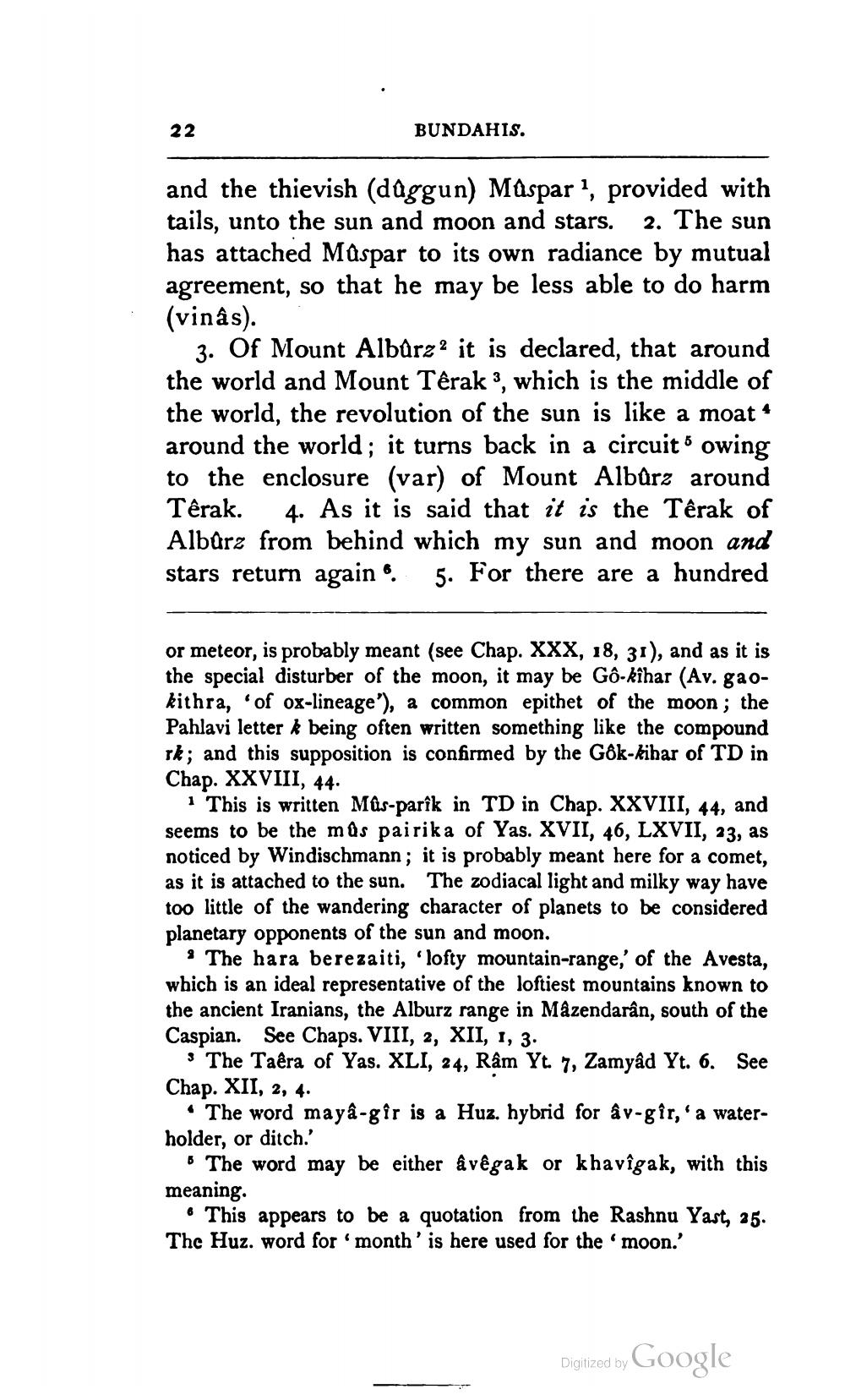________________
22
BUNDAHIS.
and the thievish (doggun) Maspar 1, provided with tails, unto the sun and moon and stars. 2. The sun has attached Maspar to its own radiance by mutual agreement, so that he may be less able to do harm (vinâs).
3. Of Mount Albůrz? it is declared, that around the world and Mount Têrak 3, which is the middle of the world, the revolution of the sun is like a moat around the world; it turns back in a circuito owing to the enclosure (var) of Mount Albůrz around Têrak. 4. As it is said that it is the Têrak of Alborz from behind which my sun and moon and stars return again 6. 5. For there are a hundred
or meteor, is probably meant (see Chap. XXX, 18, 31), and as it is the special disturber of the moon, it may be Gô-kihar (Av. gaokithra, of ox-lineage'), a common epithet of the moon; the Pahlavi letter & being often written something like the compound rk; and this supposition is confirmed by the Gôk-kihar of TD in Chap. XXVIII, 44.
1 This is written Mûs-parîk in TD in Chap. XXVIII, 44, and seems to be the mos pairika of Yas. XVII, 46, LXVII, 23, as noticed by Windischmann; it is probably meant here for a comet, as it is attached to the sun. The zodiacal light and milky way have too little of the wandering character of planets to be considered planetary opponents of the sun and moon.
• The hara berezaiti, lofty mountain-range,' of the Avesta, which is an ideal representative of the loftiest mountains known to the ancient Iranians, the Alburz range in Mazendarân, south of the Caspian. See Chaps. VIII, 2, XII, I, 3.
· The Taêra of Yas. XLI, 24, Râm Yt 7, Zamyâd Yt. 6. See Chap. XII, 2, 4.
The word mayâ-gîr is a Huz. hybrid for âv-gîr, a waterholder, or ditch.
The word may be either avêgak or khavîgak, with this meaning.
• This appears to be a quotation from the Rashnu Yast, 25. The Huz. word for month' is here used for the moon.'
Digitized by
Digitized by Google




